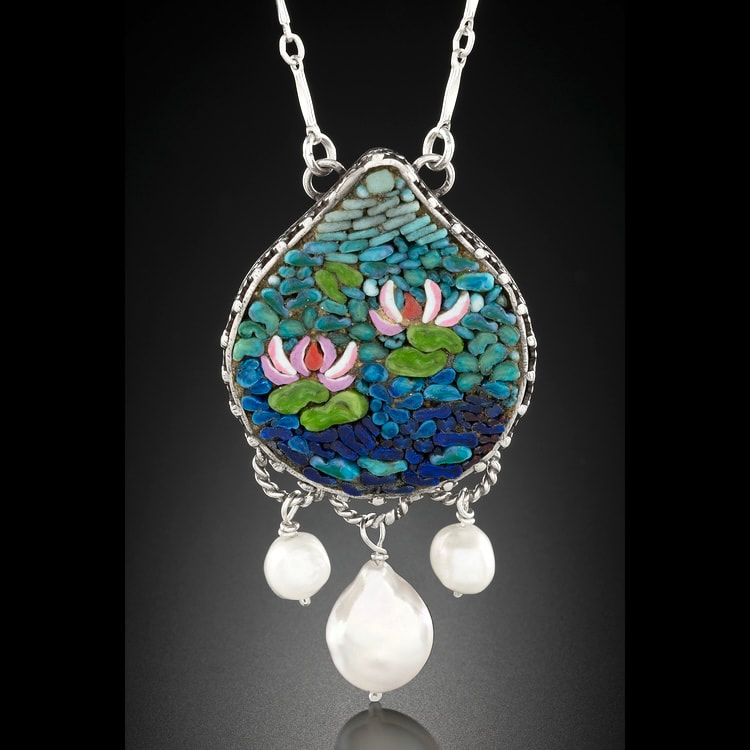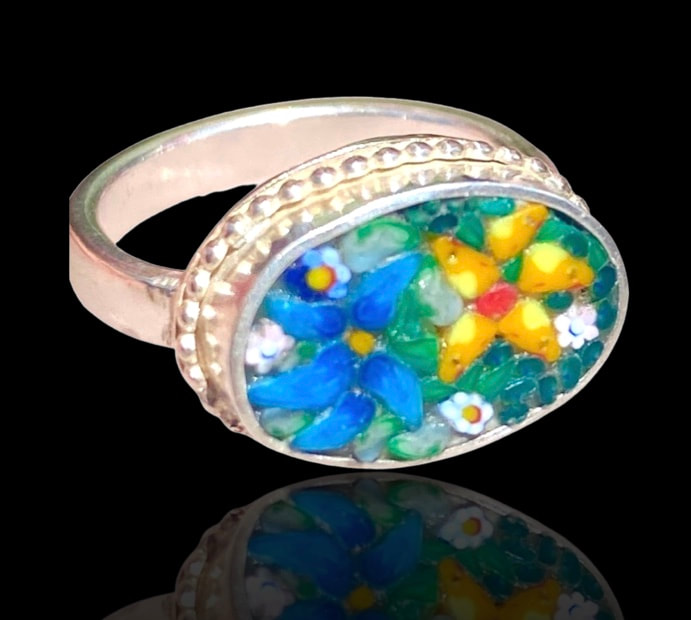What is a Micro Mosaic?
Micro mosaics, or Filato Romano, are an Italian technique, made of glass and developed in the the Vatican in the 1700’s as a way to preserve deteriorating paintings. Upon completion of the painting!ls, the artisans began experimenting with spun glass enamel threads, miniaturizing the paintings and setting them into jewelry. Some examples of micro mosaic jewelry can have as many as 1000 pieces per square inch!
The creation of micro mosaic jewelry is an art nearly lost to time, with only a rare few modern day artists creating these heirloom pieces. In 2019, I travelled to Ravenna, Italy, the mosaic capital of the world, to learn the authentic art form of micro mosaic. It is one of just a few schools in the world where this endangered art form is taught. It is a city filled with ancient history and surrounded by Roman ruins, along with Dante’s grave. Mosaics are everywhere, even the street signs are done in mosaics!
I begin with glass called smalti that comes from the oldest glass factory in Murano, Italy. I melt the smalti with a torch and shape it while it’s molten, using specialized tools. Then I pull the hot glass into long thin threads, or filati using a plier. The shape I create when molten, is maintained when I pull it into the threads. These filati are cut into tiny pieces, or tesserae and set with tweezers, within the jewelry setting.
A handmade stucco, or adhesive, secures the tesserae in place. Following the ancient Roman formula, I pulverize travertine marble until it becomes flour-like, and mix it with a combination of linseed oil, and allow it to harden for several months. I repeat the process, to obtain the tradional stucco, which is slow curing and will last the ages.
The creation of micro mosaic jewelry is an art nearly lost to time, with only a rare few modern day artists creating these heirloom pieces. In 2019, I travelled to Ravenna, Italy, the mosaic capital of the world, to learn the authentic art form of micro mosaic. It is one of just a few schools in the world where this endangered art form is taught. It is a city filled with ancient history and surrounded by Roman ruins, along with Dante’s grave. Mosaics are everywhere, even the street signs are done in mosaics!
I begin with glass called smalti that comes from the oldest glass factory in Murano, Italy. I melt the smalti with a torch and shape it while it’s molten, using specialized tools. Then I pull the hot glass into long thin threads, or filati using a plier. The shape I create when molten, is maintained when I pull it into the threads. These filati are cut into tiny pieces, or tesserae and set with tweezers, within the jewelry setting.
A handmade stucco, or adhesive, secures the tesserae in place. Following the ancient Roman formula, I pulverize travertine marble until it becomes flour-like, and mix it with a combination of linseed oil, and allow it to harden for several months. I repeat the process, to obtain the tradional stucco, which is slow curing and will last the ages.






